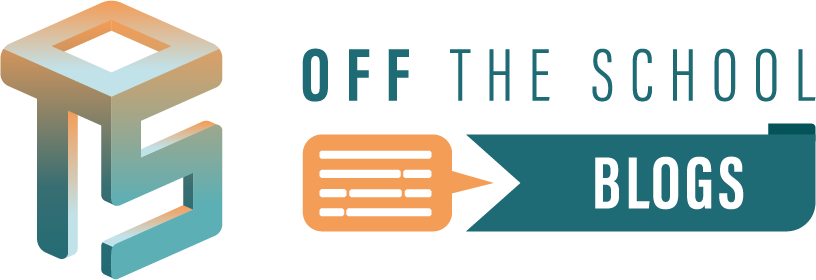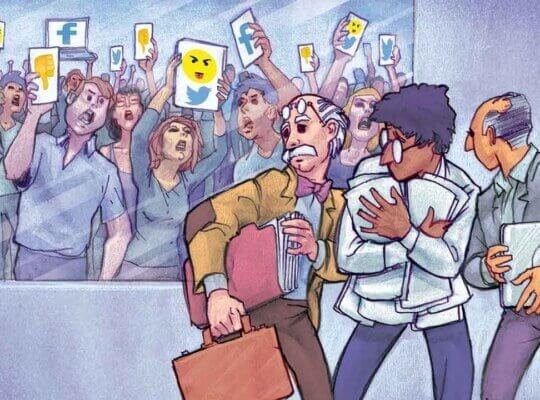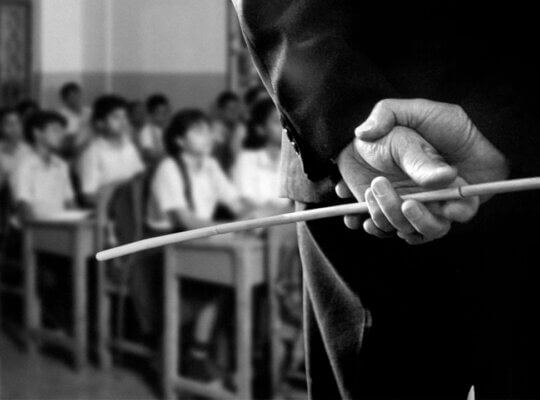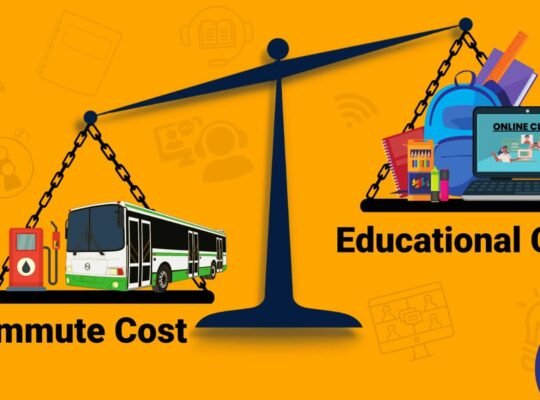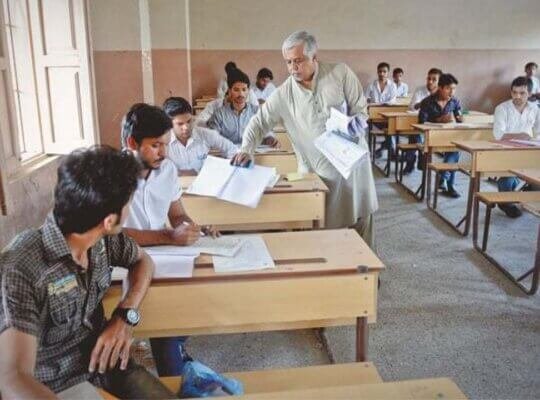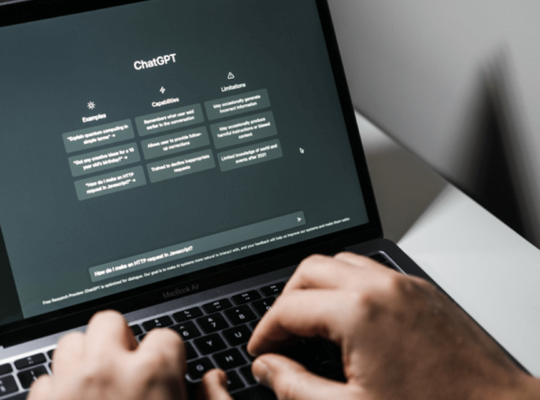It is the best of times, it is the worst of times — a tale of privilege and poverty, one that would make Charles Dickens write ‘A Tale of Two Realities’.
The age of technological advancement is upon us, and with it comes a profound inequality. In this epoch of information, where knowledge is power, some are blessed with everything, while others have nothing. The season of enlightenment and the spring of education shine bright for the few, while the winter of ignorance and the season of disheartenment loom over the many.
This tragic dichotomy echoes through the halls of educational institutes, where a growing chasm divides the privileged from the underprivileged. On one side, the elite institutions offer students access to cutting-edge AI tools, fast internet, and the latest technology, giving them a headstart in life. On the other side, many government and private schools struggle to provide even the basic necessities, leaving students in the dark ages.

As I stand in a humble school in Karachi, surrounded by gleaming computers, the realisation strikes me like a bolt of lightning. The children in this room, barely into their teenage years, are already on the wrong side of the digital divide. A simple question reveals that over half of them have never touched a computer ever. It is not a story of rural isolation, but of urban deprivation — it is a story of potential being held back by inequality.
It is a tale of two realities, where privilege and poverty stand in stark contrast to each other. And yet, amidst the darkness, there is a flicker of hope, for the divide can be bridged, and the power of technology can be harnessed to create a more equitable world. By providing these children with the tools they need to succeed, we can help build a brighter future for all.
But the question remains: how do we bring the light of technology to the dark corners of underserved communities? It is a question that has been lingering in the air like thick fog, casting a shadow over the lives of millions of children. However, there are ways to bridge this gap and give every child a shot at success. Here are five practical solutions that can help us achieve this goal.
Training teachers on AI and chatbots

Technological advancements have the potential to transform education. AI and chatbots offer new ways of teaching and learning that can spark students’ interest in technology. However, teachers must be trained to use these tools effectively to make the most of them.
To this end, the government and NGOs must train teachers to use AI and chatbots in the classroom. Non-profit organisations like Off The School (OTS) are already offering such training for free, and the results are impressive. Customised lessons and quizzes created with the help of AI and chatbots can pique students’ interest and motivate them to learn more.
Utilising mobile phones for digital skill development
Cell phones can offer a valuable tool for teaching digital skills. With various applications and websites available, students can learn coding, video editing, and other digital skills on the go. However, it’s crucial to ensure that teachers are trained to properly use these tools to render the right lessons.
By offering training to teachers, they can become better equipped to use mobile phones for digital skill development and provide their students with the necessary skills to succeed in the digital age. Moreover, mobile phones can be a great equaliser, providing access to education and digital skills to those without computers in their schools. With the availability of affordable mobile phones, digital skill development can become accessible to a more extensive range of users.

Inviting underprivileged students to digitally-equipped institutes
Another way to bridge the digital divide is by inviting underprivileged students to digitally-equipped institutes. Schools and universities with computer labs can show their commitment to social responsibility by providing access to free or subsidised tech classes to underprivileged students.
By offering classes in the evenings or over the weekends, students from underserved communities can experience the power of technology and build a foundation for their future success. Moreover, such programmes can be a great way to expose students to a wider range of opportunities, helping them broaden their horizons and set ambitious goals for their future. This way, we can create a more equitable world where access to education and technology is not a privilege but a fundamental right.

Mosques as solution to infrastructure challenges
In Pakistan, the lack of infrastructure for education is a major challenge, with over 22 million children out of school, according to United Nations International Children’s Emergency Fund (UNICEF) data. However, a solution could be right in front of us — the use of mosques. OTS is already using mosques to provide almost free education and skills to over 1,900 students in Karachi’s Martin Quarters. By installing computers in Baghdadi Masjid and Jamia Riazul Uloom, OTS is providing formal education and digital skills to underserved communities.

This approach can serve as a model for other mosques to follow, harnessing the power of technology to create a more equitable world. Thousands of mosques across the country can be transformed into centres for education, providing a range of skills and knowledge to underserved communities. By utilising mosques as a solution to infrastructure challenges, we can help bridge the digital divide and provide every child with the tools they need to succeed.
Role of private sector in bridging education gap
The private sector should invite students to their industries and offices to provide them with practical exposure. It can be an excellent opportunity for students to experience the power of technology in real-life situations and learn from industry experts.
The corporate sector can significantly bridge the education gap by investing in teachers’ training programmes and providing practical exposure as part of their social responsibility initiatives. By working together with the education sector, they can create a more equitable world where every child has access to the skills and knowledge they need to succeed in the 21st century.

In these dark times of crisis, our children’s future hangs in the balance. With the floods wreaking havoc and the digital divide haunting us, it’s easy to feel helpless, waiting for the government to take action. But waiting is not an option. Our children’s futures cannot be left to chance.
As citizens, we have the power to create a brighter tomorrow for the next generation. We cannot let circumstances dictate our destiny. We must take action and do what we can to bridge the education gap, give every child a chance to succeed, to build a future of promise and possibility.
We must come together and support non-profit organisations, teach digital skills, and provide practical exposure. Each of us has a vital role to play in creating a more equitable world. The time for action is now.
We cannot let the current situation become the worst of times for our children. We must be their hope, their guiding light, and the wind beneath their wings. We must ensure that every child has access to education and the skills they need to succeed in the 21st century.
Together, we can create a brighter future for our children, where they may say that “it was not the best of times,” but at least it was a time of progress, growth, and opportunity. Let us not wait for tomorrow, let us act today, for the future of our children, and for the future of our world.
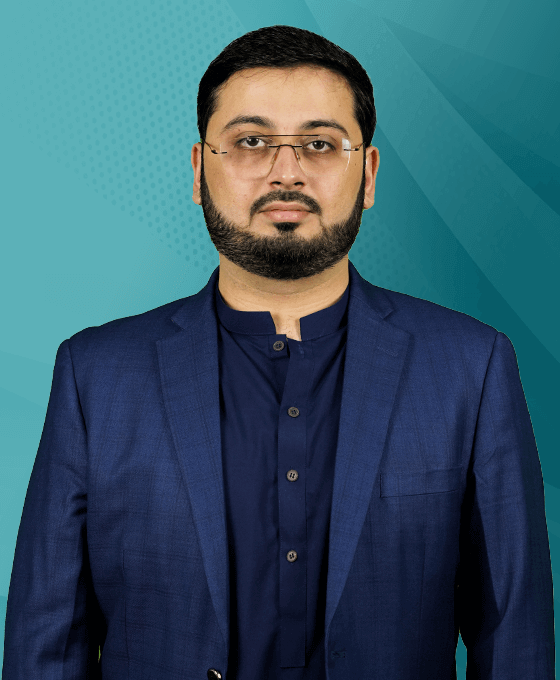
Meet Najam Soharwardi, a Chevening Scholar and education advocate founded “Off The School” (OTS) to provide formal education to underserved communities.
